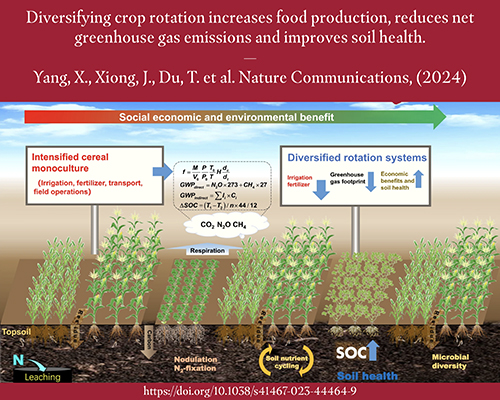
The Impact of Concrete Production on Climate Change
Concrete is the second most widely used material in the world, with an annual consumption of approximately 14 billion cubic meters. A significant portion of this concrete, about 40%, is used for constructing residential buildings.
If all the concrete used in a year were poured into paving slabs that are ten centimeters thick, it would be enough to cover the entire land area of England and half of Wales. In the United States, the same amount of concrete would cover the state of New York.
However, the production of concrete releases carbon dioxide (CO₂), a greenhouse gas that contributes to climate change. The production of Portland cement, which is the binding agent in concrete, accounts for 7%-8% of the world’s direct CO₂ emissions.
Scaling Up Low-Carbon Cement Production
In an effort to reduce carbon emissions, the production of low-carbon cement, also known as “green” cement, is being scaled up. A new plant in Redding, California, will produce approximately 15,000 tonnes of low-carbon cement annually. This amount can be used to make about 50,000 cubic meters of concrete, which is less than 0.0004% of the world’s concrete production.
At this plant, Fortera, a materials technology company, captures CO₂ emitted during conventional cement production and converts it into green cement, a form of calcium carbonate. This process can reduce carbon emissions by 70% on a tonne-for-tonne basis.
The Challenge of Cement Production
Cement has been used for over 2,000 years in construction projects. It is made by combining gravel, sand, cement, water, and sometimes synthetic chemicals. The European Union currently uses over two tonnes of concrete per person per year, with 325kg of that being cement. This is equivalent to the amount of food an average European person consumes in five months.
Cement production is energy-intensive and emits a significant amount of greenhouse gases. When limestone is heated in a kiln, nearly half of it is lost as CO₂ emissions. For every tonne of ordinary Portland cement produced, 0.6-0.9 tonnes of CO₂ are released into the atmosphere.
The main challenge for the cement industry is to reduce CO₂ emissions while meeting global demand. In addition to developing new technologies, low-carbon cement production needs to be established on a global scale to meet the infrastructure needs of economically developing nations.
Exploring Low-Carbon Alternatives
There are other ways to reduce the carbon footprint of concrete, such as using fly ash or slag to partially replace Portland cement. However, the availability of these materials may decrease as other industries decarbonize.
Current strategies for decarbonizing cement and concrete rely heavily on carbon capture and storage technology. This involves capturing CO₂ emissions from cement plants and either using it within the cement production process or storing it underground. However, this technology has a high investment cost and requires specific geological characteristics.
The Role of Sustainable Design and Material Efficiency
Before low-carbon cement technology becomes more widespread, engineers, designers, and builders can contribute to sustainability by using construction materials more efficiently and choosing products with lower embodied carbon. Embodied carbon refers to the carbon emissions released during the life cycle of building materials.
Some governments are already taking steps to promote low-carbon construction methods. For example, the Climate Action Plan 2024 in Ireland requires the use of low-carbon cement and construction methods in government-supported projects.
With the right incentives and investments, it is possible for almost all cement produced worldwide to be low-carbon or “green.” Retrofitting existing cement production plants with low-carbon technologies can demonstrate the feasibility of large-scale low-carbon cement production.
Don’t have time to read about climate change as much as you’d like?
Get a weekly roundup in your inbox instead. Every Wednesday, The Conversation’s environment editor writes Imagine, a short email that goes a little deeper into just one climate issue. Join the 30,000+ readers who’ve subscribed so far.
SDGs, Targets, and Indicators
-
SDGs Addressed or Connected to the Issues
- SDG 7: Affordable and Clean Energy
- SDG 9: Industry, Innovation, and Infrastructure
- SDG 11: Sustainable Cities and Communities
- SDG 13: Climate Action
The issues highlighted in the article are connected to these SDGs because they involve the sustainable production and use of concrete, which is a key material in infrastructure development, urbanization, and construction. The article specifically addresses the environmental impact of concrete production and the need for low-carbon alternatives to reduce greenhouse gas emissions and mitigate climate change.
-
Specific Targets
- Target 7.2: Increase substantially the share of renewable energy in the global energy mix
- Target 9.4: Upgrade infrastructure and retrofit industries to make them sustainable, with increased resource-use efficiency and greater adoption of clean and environmentally sound technologies and industrial processes
- Target 11.2: By 2030, provide access to safe, affordable, accessible, and sustainable transport systems for all, improving road safety, notably by expanding public transport, with special attention to the needs of those in vulnerable situations, women, children, persons with disabilities, and older persons
- Target 13.2: Integrate climate change measures into national policies, strategies, and planning
The article indirectly addresses these targets by discussing the need for renewable energy sources in cement production, the retrofitting of existing cement plants to reduce emissions, and the integration of climate change measures in the cement industry’s policies and strategies.
-
Indicators
- Indicator 7.2.1: Renewable energy share in the total final energy consumption
- Indicator 9.4.1: CO2 emissions per unit of value added
- Indicator 11.2.1: Proportion of population that has convenient access to public transport, by sex, age, and persons with disabilities
- Indicator 13.2.1: Number of countries that have communicated the establishment or operationalization of an integrated policy/strategy/plan which increases their ability to adapt to the adverse impacts of climate change and foster climate resilience and low greenhouse gas emissions development in a manner that does not threaten food production
The article does not explicitly mention these indicators, but they can be used to measure progress towards the identified targets. These indicators would assess the share of renewable energy in cement production, the reduction of CO2 emissions per unit of value added in the cement industry, the accessibility of public transport for the population, and the establishment or operationalization of integrated policies/strategies/plans to address climate change impacts in the cement sector.
Table: SDGs, Targets, and Indicators
| SDGs | Targets | Indicators |
|---|---|---|
| SDG 7: Affordable and Clean Energy | Target 7.2: Increase substantially the share of renewable energy in the global energy mix | Indicator 7.2.1: Renewable energy share in the total final energy consumption |
| SDG 9: Industry, Innovation, and Infrastructure | Target 9.4: Upgrade infrastructure and retrofit industries to make them sustainable, with increased resource-use efficiency and greater adoption of clean and environmentally sound technologies and industrial processes | Indicator 9.4.1: CO2 emissions per unit of value added |
| SDG 11: Sustainable Cities and Communities | Target 11.2: By 2030, provide access to safe, affordable, accessible, and sustainable transport systems for all, improving road safety, notably by expanding public transport, with special attention to the needs of those in vulnerable situations, women, children, persons with disabilities, and older persons | Indicator 11.2.1: Proportion of population that has convenient access to public transport, by sex, age, and persons with disabilities |
| SDG 13: Climate Action | Target 13.2: Integrate climate change measures into national policies, strategies, and planning | Indicator 13.2.1: Number of countries that have communicated the establishment or operationalization of an integrated policy/strategy/plan which increases their ability to adapt to the adverse impacts of climate change and foster climate resilience and low greenhouse gas emissions development in a manner that does not threaten food production |
Copyright: Dive into this article, curated with care by SDG Investors Inc. Our advanced AI technology searches through vast amounts of data to spotlight how we are all moving forward with the Sustainable Development Goals. While we own the rights to this content, we invite you to share it to help spread knowledge and spark action on the SDGs.
Fuente: theconversation.com

Join us, as fellow seekers of change, on a transformative journey at https://sdgtalks.ai/welcome, where you can become a member and actively contribute to shaping a brighter future.






